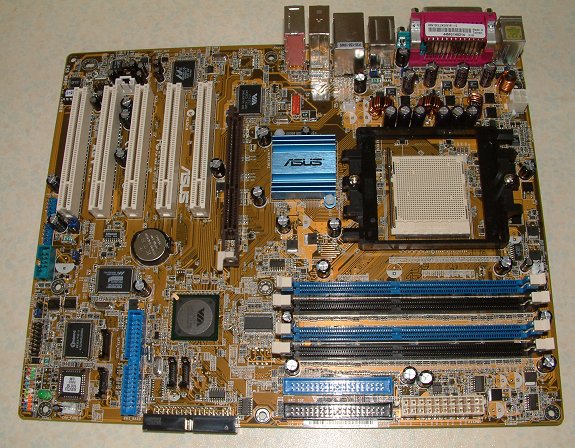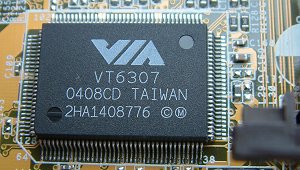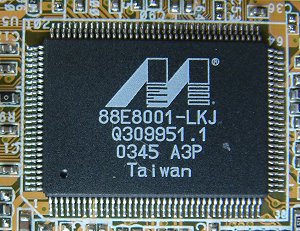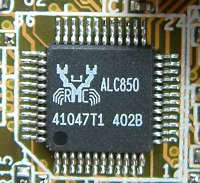Layout and features

ASUS' generic PCB colouring is now a company trademark. We'd like it if ASUS pushed out the style boat once in a while. The board's deluxe moniker infers a glut of features that will be provided by either the chipset's southbridge or discrete controllers. As you can see, it's a busy-looking board, with the socket dominating the right-hand side. ASUS has decided to run with VIA's 2-bridge design here, so PCB space is at a premium. We like the way the 4-pin power connector is sandwiched on one side of the board, out of airflow's way.
Speaking with reference to PCB layout, there's no meaningful changes in the transition between socket-940 and socket-939, so it's a case of manufacturers tweaking preset S940 designs. We like how the DIMM slots are far enough to the right-hand side so as not to interfere with an AGP card's heatsink. That has the knock-on benefit of installing and removing system memory easily. S939 harnesses 2 64-bit non-registered memory controllers for oodles of unbuffered bandwidth. ASUS makes choosing the dual channels an easy task. We found the K8T800 Pro's northbridge heatsink to be a touch too close to the retention bracket. One has to carefully feed the cooler's clip in and secure it from the opposing side. Still, it's no way near as awkward as MSI's mounting mechanism. IDE ports and the 20-pin main power connector are positioned in ideal locations.

Looking further to the left shows ICS' clock generator and a rotated floppy drive port. The A8V Deluxe also carries VIA's useful VT8237 southbridge, you can see two SATA ports close by, run off an on-chip controller. The VT8237 has the ability to service a couple more SATA ports through a physical layer. Instead, ASUS has opted to carry Promise's hybrid PDC20378. It includes two SATA and a single IDE port. Through a clever BIOS, one can run RAID0, RAID1, RAID0+1, and multiple RAID configs using all three ports. However, as the controller is tied in with the PCI bus, bandwidth saturation may become an issue if its ports are used concurrently. That's perhaps why NVIDIA has moved on to grafting all high-speed ports on-chip. We also like the way that ASUS colour codes motherboard-to-case pins

The first discrete controller of note is VIA's 3-port FireWire ASIC. Unlike USB2.0, FireWire's not amalgamated into either VIA or NVIDIA's latest chipsets. It's a low-cost discrete addition that invariably finds its way on to deluxe motherboards.

Cranking up the possible bandwidth toll on the laboured PCI bus is Marvell's single-chip Gigabit Ethernet controller. We now expect GbE to be present on sub-£100 motherboards. The increase in home networking and drives' sustained transfer rate has made it a worthwhile addition over regular 100MBit LAN.

It's strange to see ASUS ditch ADI's excellent sound CODECs and associated software. The replacement, however, is no slouch, as this is Realtek's top-of-the-line AC'97 CODEC. 7.1-channel sound and digital outputs means ASUS' A8V Deluxe is a fine choice for home cinema buffs, although a potential 2.4GHz Athlon 64 FX-53 will barely be taxed in this role.

2 forms of optical output and 6 sound ports reiterates ASUS' attention to audio matters. The rest of the back panel is standard fare.









